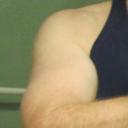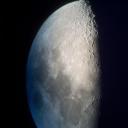Yahoo Answers is shutting down on May 4th, 2021 (Eastern Time) and beginning April 20th, 2021 (Eastern Time) the Yahoo Answers website will be in read-only mode. There will be no changes to other Yahoo properties or services, or your Yahoo account. You can find more information about the Yahoo Answers shutdown and how to download your data on this help page.
Trending News
How does one collimate a catadioptric telescope?
I know how to collimate my dobsononian telescope, but haven't got a clue where to start on my catadioptric. Is there a manual or device that can help?
4 Answers
- ?Lv 79 years agoFavorite Answer
It depends on what kind of catadioptric it is. If it's a Maksutov-Cassegrain, it shouldn't need collimation. If it's a Schmidt-Cassegrain, there should be instructions in the user manual. If it's one of those strange Bird-Jones "short tube" Newtonians with a Barlow lens built into the focuser or diagonal, I'd throw it in the trash. The link below is a god general article on collimation.
- Larry454Lv 79 years ago
This is what I do with my C-11, using the defocused concentric ring method:
1. Set up on a nice bright star - not a planet, that's high enough to stay clear of haze and lousy conditions.
2. Use a medium high eyepiece - higher than 100x is good, but too high will make it difficult to keep it in view.
3. Make sure you are polar aligned / tracking properly.
4. Center the star as well as you can and then slowly defocus it. As you defocus each way, you should get a donut-shaped image of the star. Depending on the condition of your optics and the state of collimation, this donut may be off center or assymmetric.
5. The goal is to have a nice, even, concentric set of defocused rings on each side of the focus adjustment. This can usually be accomplished by changing the position of the three small screws on the front of the secondary mirror housing. This has to be done slowly, since it will tend to move the star out of the field of view. It helps to do this with a friend, but it is not essential. It certainly must be done carefully, since you really don't want to drop a screwdriver onto your corrector plate. If you end up with a defocused donut that is centered on one side of focus but not on the other, then you may have primary mirror issues that really should be addressed by a professional. But you can usually get pretty close if you have a decent scope and a patient approach. Once the donut is concentric and symmetric, you should be in reasonably good shape.
You will find that a catadioptric need collimation less frequently than a Dob/Newtonian. As long as you are not driving down two track roads with the scope bouncing around in the bed of your pickup, it usually holds collimation pretty well for most of an observing season, although I still check it frequently.
This is not intended to replace your owner's manual. I guess I assumed that if you had one, you would have looked there first. If you do have one, I would certainly still look there first.
Best of Luck.
- wallyrushLv 69 years ago




